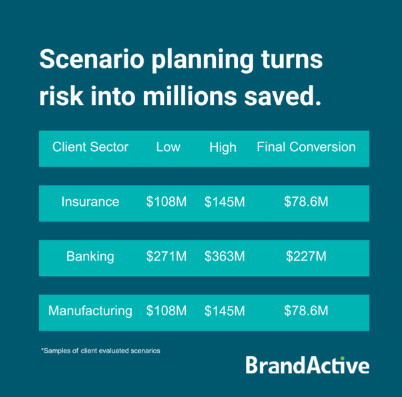Rebranding is a major investment. With the right planning, it doesn’t have to be a risky one.
A rebrand represents opportunity: to align your organization’s identity with its strategy, unlock new markets, and build long-term brand equity. But as with any large-scale transformation, financial clarity is just as important as creative direction.
Leadership will ask: What will it cost? What will it take? And perhaps most importantly, how will we stay on track?
With a grounded plan, clear ownership, and disciplined oversight, you can create a rebranding budget that supports your goals and earns long-term stakeholder confidence. We have supported over 1,100 rebrand projects, including some of the world’s most complex rebrand implementations. Here’s how to build a rebrand budget that finance actually loves.
Defining the scope and spend up front
Before any design work begins, you must clarify the rebrand’s scope, timing, and funding structure. That includes identifying which branded assets are included in each phase, how fiscal timelines will affect availability of funds, which funding model makes the most sense for your organization – centralized, decentralized, shared cost-centre, CapEx vs. OpEx or a blend of any of the above.
When a $5.6B major healthcare system began its rebrand, the marketing team used data-informed modeling to present cost scenarios to the board ranging from $50M to $130M, depending on the rollout strategy. Leadership aligned around a hybrid approach that converted every asset while remaining below industry benchmarks. Their ability to speak in clear operational and financial terms built trust across the executive suite.
Scenario modeling helps you show what’s possible and what’s at stake. Instead of asking leadership to approve a fixed number, you can outline how phased rollout, full conversion, or targeted asset changes affect both spend and impact.

Tip: Your project charter should go beyond creative approvals. Use it to define phasing, ownership, and dependencies between departments. Return to it often.
Sequence for efficiency, not just speed
Rushing a rebrand often drives up costs. By sequencing your rollout to align with other organizational priorities, you reduce duplication, prevent rework, and make the most of existing resources.
When a multinational enterprise activated its new global brand across more than 600 locations, they coordinated implementation with scheduled facility upgrades. This approach helped avoid unnecessary labor and asset waste, resulting in more than $50 million in cost avoidance. Early execution at priority sites also built internal confidence and maintained momentum.
Tip: Map your rebrand to overlap with other initiatives like tech deployments or office renovations. Piggybacking on existing timelines often unlocks hidden savings.
Rebranding budget checklist - 7 steps for marketing leaders
Whether you’re rebranding a multi-billion-dollar enterprise or a mid-sized business, implementing your new brand requires a substantial budget and focused effort. Download a cheat sheet of the essential steps.
Monitor execution like a CFO
Budgets typically go off track during execution, not planning. Change requests, vendor misalignment, and unclear asset ownership are common culprits.
To maintain control:
- Track spend by category in real time
- Review vendor quotes and invoices closely
- Define a process to flag and approve scope changes
Most of our clients implement live dashboards to track asset conversion rates and budget performance across business units. When signage production costs began to exceed estimates, the teams can responded quickly by renegotiating timelines and deliverables, preventing broader overages.
Tip: Assign a financial lead within each workstream of your rebrand team. Empower them to act as a gatekeeper for budget decisions and course corrections.
Define what success looks like and prove it
When Marketing defines success in business terms, not just creative ones, it earns lasting credibility.
At another healthcare system ($16.5B in revenue), the brand team and executive sponsors aligned early on a single goal: deliver one unified patient and employee experience on Day 1. To prove progress, we helped build readiness dashboards that tracked conversion across more than 30,000 branded assets and 65 facilities. The team reached 97% brand readiness by launch — a milestone that became the organization’s internal proof of integration success.
By tying brand implementation to operational readiness, they showed how a well-managed rebrand can accelerate confidence across the organization and strengthen the foundation for the newly combined company.
Tip: Make results visible, even simple “planned vs. actual” dashboards can help demonstrate operational excellence and build stakeholder confidence.
The real secret to earning Finance’s confidence isn’t the size of your budget, it’s the discipline behind it. When Marketing approaches a rebrand with the same operational rigor and transparency Finance expects of themselves, something powerful happens: trust builds. Suddenly, budget reviews become strategy discussions, not approvals. And that’s how Marketing earns its seat at the table, not by asking for it, but by proving it belongs there.
If you’re preparing for a rebrand or already managing implementation, we can help you plan smarter, build stronger alignment, and stay on track. Let’s talk.



